Dear Artist,
Recently, Judith Meeks of Toronto, ON, Canada, wrote, “I’ll soon be chairing a panel discussion called ‘Finding Your Voice.’ In your understanding, how do we translate our life experiences into our paintings and express who we really are? We may have good work habits, but how do we become clear about what we want to say? And how much can be done with a conscious plan?”
Thanks, Judith. This is one of those sticky head-scratchers that can cause the loss of sleep. First off, and contrary to what I’ve said before, plans can actually derail the voice-finding process. Further, you have to know what you mean by “voice.” Voice in style is different than voice in cause. Ideally, style develops over time. Cause is based on attitude and issue. With growth and development, causes change. A predetermined voice shackles creativity. To find your very own voice, I think you need to have a few things going for you:
You need to make stuff. Artists who put in regular working hours find their voice. Work itself generates clarity and direction. It’s like invention — one thing leads to another. One must only lurk for voice. Unfortunately, along the way, most drop the ball. Like the dilettante inventor of the soft drink “6-up,” they just don’t stick around long enough.
You need hunger. It can be the hunger for knowledge or for self-knowledge. It can be the desire to find an antidote for some injustice or human miscalculation. Perhaps you need some inexplicable, deep-seated compulsion to keep moving forward.
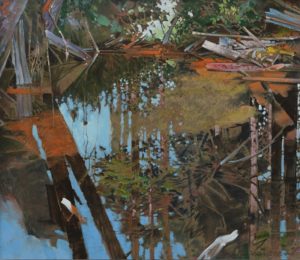
Pond On The Yakoun, Queen Charlotte Islands, circa 1990
Acrylic on canvas
30 x 34 inches
by Robert Genn
You need curiosity. Wondering how things will turn out is more powerful than having a pretty good idea beforehand. Wondering if you can do it gives you reason to try. Curiosity is the main juice of “ego-force” that keeps you keeping on.
You need joy. You need to feel joy in yourself and you need to feel you’re giving it to others. As Winston Churchill said, “You may do as you like, but you also have to like what you do.” A disliked job is soon abandoned.
I’m writing you from a remote anchorage off Grenville Channel on the West Coast of British Columbia. I’m thinking human nature is a mighty puzzle. Every time I go onto one of these islands looking for something to paint, I ask myself the old “What’s my voice?” question. One thing for sure, if I go ashore knowing what my voice is, it will be a weak squawk when I get to the spot.
Best regards,
Robert
PS: “Why this hunger to write — I always ask myself — if not the longing to discover what I believe? The pen divines my thoughts.” (David Conover in One Man’s Island)
Esoterica: “What’s my voice?” has to be asked by each individual artist. Committee-free, the artist needs to develop her voice as if on an island. To be a voice is to be a different voice, set apart, unique. How to find it? Go to your island, put in long hours, fall in love with process — your voice will come out of your work.
This letter was originally published as “Finding your voice” on July 23, 2010.
“It’s my wish that I can help creative people think of new ways to be creative – to get more joy and understanding from their own unique processes.” (Robert Genn)
Featured Workshop
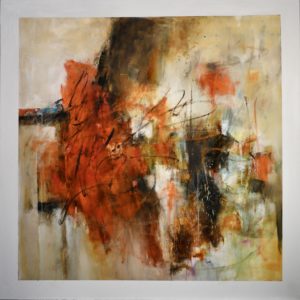 Want to create great abstracts but not sure where to start and how do you know when the abstract painting is done?
Want to create great abstracts but not sure where to start and how do you know when the abstract painting is done?
Your knowledge of color and design plays a big part in creating an abstract that will stand out from all the others. It is also important to understand how shapes provide strength to your painting and how your edges add sensuality. So, how do you put it all together and come out with a painting that is selected for major shows, and sells?
Design: What is considered a strong design? How to create a design that is exciting.
Color: When it comes to color what colors are best and which colors speak to the viewer?
Are there specialized ways to apply your paint to get the “look” you are searching for?
How do you get an inner glow in your abstracts?
What importance do “Quiet Colors” play in an abstract?
Shape: Are all shapes equal?
What are support shapes?
How do you connect shapes to make them interesting?
Edges: How do you do to make edges sensual?
This workshop/retreat will cover the above subjects giving you the ability and power to take your art to a higher level.
Date for this workshop/retreat is September 5 – 9, 2022 in Taos, New Mexico.
Website: www.gwenfox.com

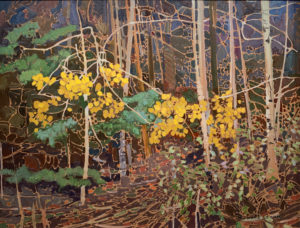
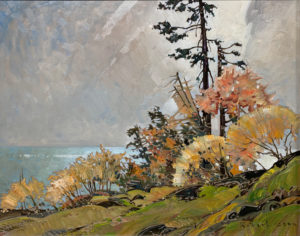
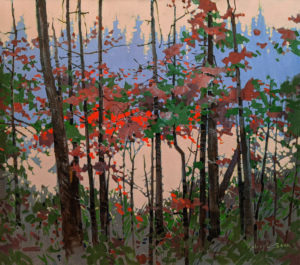
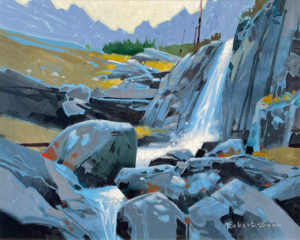
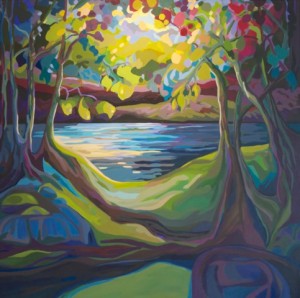



109 Comments
So articulate a voice so beautifully said visually! Thanks RG
I love the paintings you chose to compliment this letter. The letter is also very poignant and very relevant to me. I have wondered through the years where people get their ideas and inspiration. I wonder how come I don’t seem to have the same imagination or drive. One thing that has become clear to me is that my inspiration is external. It comes from what I see and feel about it. It is not from some internal source. Lately I have been challenging myself to work outside my comfort zone. Its a little scary but no pain no gain.
I love Robert’s reply to this question – put in the work. To paraphrase something the musician Nick Cave said about creativity and voice: “What you make is really none of your business, what is your business is to dedicate and commit yourself to the work at hand.”
Well put. Absolutely nailed it. Yes passion. Yes curiosity. As one who just discovered their voice just over two years ago after well over a decade of searching, i seemed to have found it through obsession with the daily work, with discovery and study of classical and fundamental concepts. Meditation helps as well – sort of taking a comb to the knotted up ideas.
Thank you!
The paintings are paintings within paintings. So true of life. Wonderful colour and shaped. True love and joy.
Robert Genn uses “voice” as a metaphor, a catch-all term for self-expression aided by hard work, hunger and joy. But it’s interesting that the writer/photographer David Conover specifies a “hunger to write.” Making things such as paintings, photographs or texts implies a degree of permanence that goes beyond voiced expression, which dies on the breath. And making these forms means creation within the (limited) possibilities of each form. To describe making such art as “finding your voice” is critical synaesthesia. On a cloudy day it can and does work metaphorically, but on a bright day it is shown up as an exercise in vagueness when clarity is essential. Being clear-headed about one’s art, whatever it is, isn’t being short-sighted or blinkered; it is being ready to absorb experience and transform it by skillful awareness of one’s specific tools and the forms of one’s chosen medium.
looking at your father’s voice gives me great joy……and inspiration
Those far distant blues! RG’s voice is a whisper to us.! Thanks Sara. Beautiful letter!
I like what Chuck Close said, if I may paraphrase (because I don’t remember the whole thing): “Some artists wait for inspiration to strike. The rest of us just go in the studio and get to work.”
Miles of canvas wins again. The “voice” of style happens through work.
I have been working on a series of figurative paintings based on sketches made en Plein air, and also from the front window looking out at the children building a snowman. For many years my passion has been Plein air painting in oils. This series began before Covid as always, off and on, I would find myself observing people in various places and want to “document” the activity and express the joy felt by do-er and the observer !
I have always needed to feel passion for what I paint. I usually found it in nature. The figurative works done during Covid have been acrylic and made inside. And I loved the process of telling the story of how to have fun and enjoy life.
This group will be exhibited in a show in Burlington Ontario starting this week. I hope it is enjoyed by viewers as much as I enjoyed recalling the good things in life.
Imagine–one may discover one’s uniqueness simply through working–that the work itself reveals the voice of the artist… Style is not a template that one overlays on experience, but as Robert points out, experience is the driver of the passion to transform it into the vehicle of art. Art-making is personality-building. And what a wonderful way to find out who we are! Thank you for this, Sara!
I used to have my students go through a process to see if it would clarify their vision. Find images that you like (many of us already have a clip file), see what sort of thing they are, (color schemes, look of, themes, subjects, modern/traditional, jewelry/music/painting/sculpture/etc. ) Decide what you are most attracted to with the idea that if you know what you like, that might be related to what you might like to do. And to keep an open mind since you will be introduced to new things. We are who we are, our hand writing/way of marking, and we will get there just by working, but if we can get some insights into specifics, it can help clarify. This is a very shortened version. I had my doubts when I first saw a description, so I tried it and it did help me see a pattern in my own work. Now instead of going after ALL the things I like to do, I made some choice ( which are reversible if I chose wrong).
spcq62
imxkxt
bios1d
l7i1ui
aky2du
84mv8s
ay29xi
4nhjc5
bgfhck
6s1anv
667xlt
dm90nm
3g22ds
wxg5v1
l514mw
xa6i5r
t17707
nbtsb3
lmriwg
mnqp5h
8thxff
webu7z
pjv0mc
f84f99
bm43xs
ljpmvq
5o9x4k
7pe0hn
uv3h4j
dx3ab1
It’s more powerful to wonder how things will work out than to have a solid concept in advance just like doing retaining wall repairs work!
grruuk
qkz4ik
0bhebh
04teug
4lnsop
o1ka8a
tlqs9y
0heiip
x7gqzn
agmh71
yb786s
srn0el
qmszyh
186zoo
40ajzs
yfx8oe
v4gq2f
b24wbz
zappxh
2d7ct0
ihj66n
8zioze
z3ov9b
452txs
szmgyl
et7pk8
lkrhj3
q4m5zf
g0ynyp
c8de5k
ujibxa
08tda0
dp7q1a
46qc7a
ctm8ie
rjhcje
2w8p1x
sixqqk
yl9yy1
oo4pnh
w86jjf
ojimgj
1ban0y
ao2we2
0l04c8
s0n4uk
78t62z
9r5hl9
7pym55
nf2ekp
8j7mll
w1lbam
szt99o
6r2kij
lkufjl
hlhavs
2s7uge
pmiez0
gycqee
nxpjzz
t89qf8
k6djmc
h0u0y4
o3s493
dihec7
xsb5ej